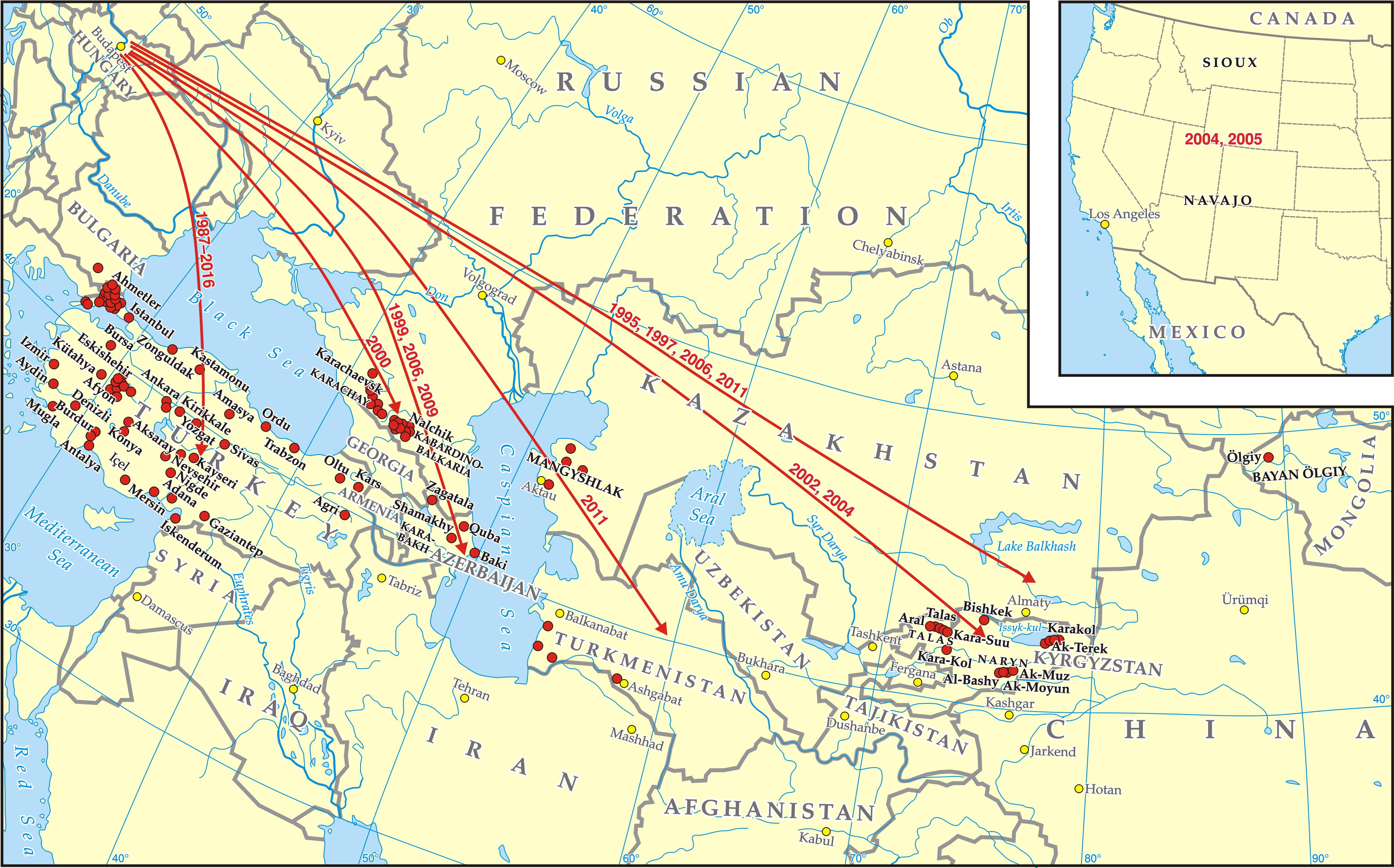The Website
This trilingual website presents a significant part of János Sipos's folk music collections among Turkic peoples in 1987-2025.
Under Publications you can search for E-books, Books, Articles, Conferences, Collection books, Lyrics and Sheet Music. Return from by clicking on the Main Menu.
Search allows you to view and listen to the video and audio recordings by genre, text, instrument, informant, location of recording etc.
The Audio and Video libraries contain recordings, often in a "road-movie" form.

Map of the locations of the expeditions



